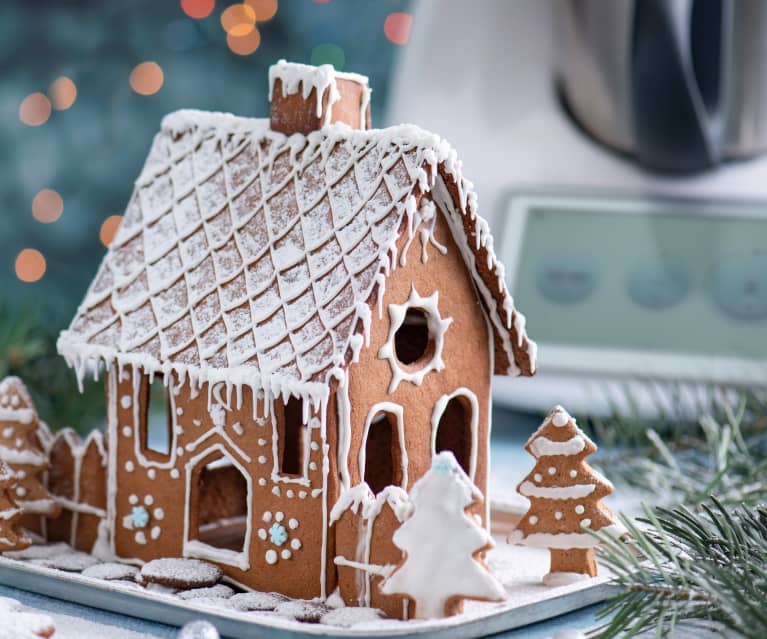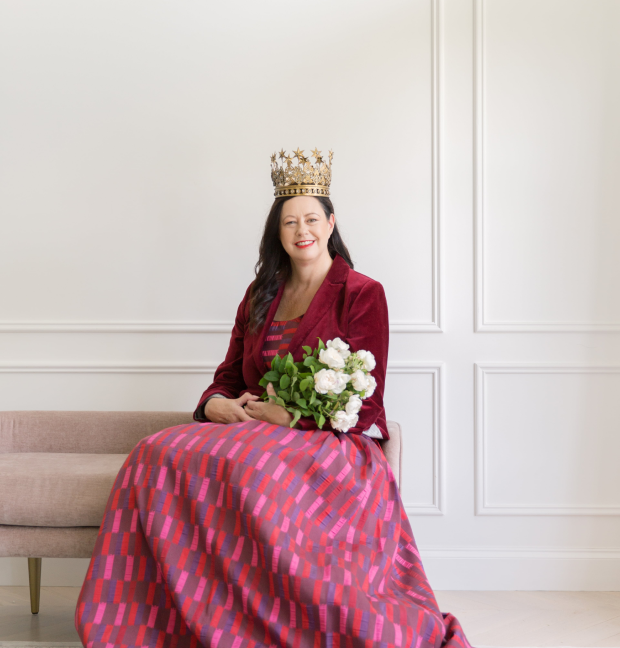
Gingerbread houses have long been associated with Christmas, along with gingerbread men, angels, stars, and trees. It is often said that gingerbread houses were inspired by the fairy tale ‘Hansel and Gretel’, and as I am always fascinated by fairytale lore, I set out to discover if this was true.
The history of this delicious spice is ancient. Originating in Malaysia, ginger travelled the spice roads over land and sea to the Middle East, and then was spread through Europe by the Crusaders in the 11th century. Monks were the first to make honey cakes infused with ginger, to celebrate saint’s days and festivals (hence its close association with Christmas). Soon, gingerbread was being made all over Europe, but particularly in England, France, and Germany where they were sold at fairs in the shape of shape of suns, moons, flowers, birds, or other animals. It was Queen Elizabeth who invented gingerbread men; she instructed her cook to make them for visitors, each one decorated to represent the man or woman to whom it was being given.
For a long time, only professional gingerbread bakers were allowed to make the delicious repast. France’s gingerbread guild began in 1571 while Germany’s came into being in 1643, with Nürnberg becoming the centre of the trade. Gingerbread guilds employed master bakers as well as woodcarvers who created beautiful stencils and patterns to press into the dough, artists to decorate with frosting, and goldsmiths who painted it with gilt (hence the expression ‘take the gilt off the gingerbread.’
Gingerbread houses came into being in Germany in the early 19th century, where they were called lebkuchenhäusle. This means they were contemporaneous with the ‘Hansel and Gretel’ fairy tale, which was collected by the Grimm brothers between 1808-1810 and published in 1812 in the first edition of their famous fairy tales. It is believed the story was told to Wilhelm Grimm by Dortchen Wild, whom he would later marry (I tell her story in my novel The Wild Girl . She certainly contributed the children’s answer to the witch, ‘The wind, the wind, the heavenly child,’ which rhymes in German: ‘der wind, der wind, das himmlische kind.’
However, there is no gingerbread house in the earliest versions of ‘Hansel and Gretel’. All the different versions published by the Brothers Grimm described a house made of bread with a roof of cake and windows of sugar. All subsequent translations of the story into English describe the witch’s house in the same way.
The first mention of gingerbread appeared in 1895, when the Australian folklorist Joseph Jacobs rewrote the story for a collection called Europa's Fairy Book, under the title ‘Johnnie and Grizzle’. He described the witch’s house as follows: ‘the door was made of butter-scotch, the windows of sugar candy, the bricks were all chocolate creams, the pillars of lollypops, and the roof of gingerbread.’
Yet every modern-day version of ‘Hansel and Gretel’ invariably describes the house as being made of gingerbread. This kind of analogical reformation is sometimes called ‘folk etymology’, where the original occurrence or meaning of a word is replaced by another as a result of popular usage.
So the motif of the gingerbread house was added to the fairytale as a result of the popularity of lebkuchenhäusle, not the other way around. And delicious, warming gingerbread can be eaten at any time of the year, not just at Christmas!
Here’s an old traditional recipe, with thanks to the wonderful blog Sew Historically
Medieval Lebkuchen recipe
1 Maß honey
1 1/2 Pfund sugar
1 Vierling flour
1 Lot cinnamon
3 Lot nutmeg
1 1/2 Lot cloves
6 Lot ginger
1 Quintel mace
rosewater
The recipe was published in The Cookbook Of Sabina Welserin. Sew Historically did a lot of research into the weights, measures and terms, and re-interpreted the recipe as follows:
Modern-day Lebkuchen recipe
2 tsp cinnamon
1 tsp nutmeg
1 tbsp cloves
3 tbsp ginger
Coarsely crush the spices using a mortar and pestle. Combine flour and coarsely ground spices in a large bowl.
Combine honey and sugar in a pot and bring to a boil. Pour the hot honey over the flour-spice-mixture. Knead everything together. Or it works just as well, to just stir everything together with a large spoon. Now let the dough rest for about 30 minutes or 1 hour.
On a floured surface, roll out the dough to about 1/2″ (1cm). Cut out rectangles with a knife. Transfer the medieval gingerbread to lined baking sheets. If you want, you can decorate the lebkuchen with blanched almond halves.
Let the lebkuchen rest overnight at room temperature.
Preheat the oven to 350°F (180°C). Brush the top of the gingerbread with rosewater.
Bake the lebkuchen for 20 minutes. Put the lebkuchen into cookie tins immediately after you remove them from the oven while still hot.
And enjoy!
Image credit: https://cookidoo.thermomix.com/recipes/recipe/en-US/r370249

